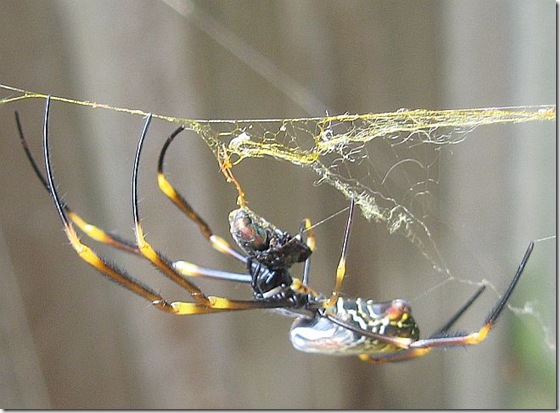I’m not sure how blogging will go this week. I’ve got a major change to software and the office network going on, as well as a Great Big Tax Catch Up to worry about.
But I’m still reading the net and saving links for later. Here’s a bunch of them for your reading pleasure:
* well, let’s start with one from last month that I forgot to talk about: pancreatic cancer is a nasty thing, and it appears it lurks around for decades before it finally reveals itself, and then it’s usually too late:
Genetic analysis of tumours by the Howard Hughes Medical Institute and Johns Hopkins University suggested the first mutations may happen 20 years before they become lethal….
The Pancreatic Cancer Research Fund welcomed the findings, but said that research was underfunded in the UK.
Chief executive Maggie Blanks said: "Survival rates have not improved in the past 40 years and whilst the disease is the UK's fifth biggest cause of cancer death, it receives less than 2% of overall research funding.
It does seem odd that such a big cancer gets so little funding. Some cancers lead a charmed life as far as funding is concerned. Others are the crazy axe wielding psychopath bridesmaid that never catches the bouquet.
* Speaking of cancer, there was a good article in The Independent about how radiation is our friend. Sort of. In low doses. I didn’t know many of things noted in the report:
One striking piece of evidence for this comes from radiologists themselves. They spend their professional lives exposed to radiation, in the form of X-rays and computed tomography (CT) scans, so you might expect them to have higher rates of cancer. But they don't. They have less cancer and they live longer than physicians in other specialities.
With modern safety measures, the actual dose received by radiologists is only slightly higher than for the general population. But that may be enough to give them an advantage. Sir Richard Doll, the leading Oxford epidemiologist who first linked smoking with lung cancer in the 1950s, published a study of British radiologists in 2003 which showed that those who entered the profession between 1955 and 1970 had a 29 per cent lower risk of cancer (though this was not statistically significant) and a 32 per cent lower death rate from all causes (which was statistically significant) than other physicians.
A similar study in the US compared workers servicing conventionally powered and nuclear-powered ships. Significantly lower death rates were found in the nuclear workers compared with the others.
* Did Harrison Ford have one too many drinks in the Green Room before this Conan O’Brien interview? Quite possibly, but it’s still a funny interview.
* I’ve been complaining for years that Sony would not release its e-reader in Australia. Now it finally has, and I’ve already got an iPad.
The only problem I’m finding with reading on the iPad is that I’m continually distracted to go back to the internet, or see if there is someone on line with whom to play a drawing game.
* AN Wislon gives a favourable review of a new biography of Tolstoy.
I know little of this subject, but it certainly seems an interesting one. I’ll probably get lazy and see that recent movie on DVD instead.
* A new European study indicates that more protein is a good idea for weight loss:
If you want to lose weight, you should maintain a diet that is high in proteins with more lean meat, low-fat dairy products and beans and fewer finely refined starch calories such as white bread and white rice. With this diet, you can also eat until you are full without counting calories and without gaining weight. Finally, the extensive study concludes that the official dietary recommendations are not sufficient for preventing obesity.
How much protein? It seems the successful diet was a "high-protein (25% of energy consumed), low-GI diet". I'm not sure how much protein you have to eat to get 25% of your energy.
* Barry Brook and others set out why nuclear power is the cheapest way to seriously reduce greenhouse gases in the long run.
I’m still speculating that mini nuclear reactors, if they ever get licensed, may be a faster way to scale it up than big reactors of current design; but that’s just my guess. And spreading that radiation around may well be good for us!

